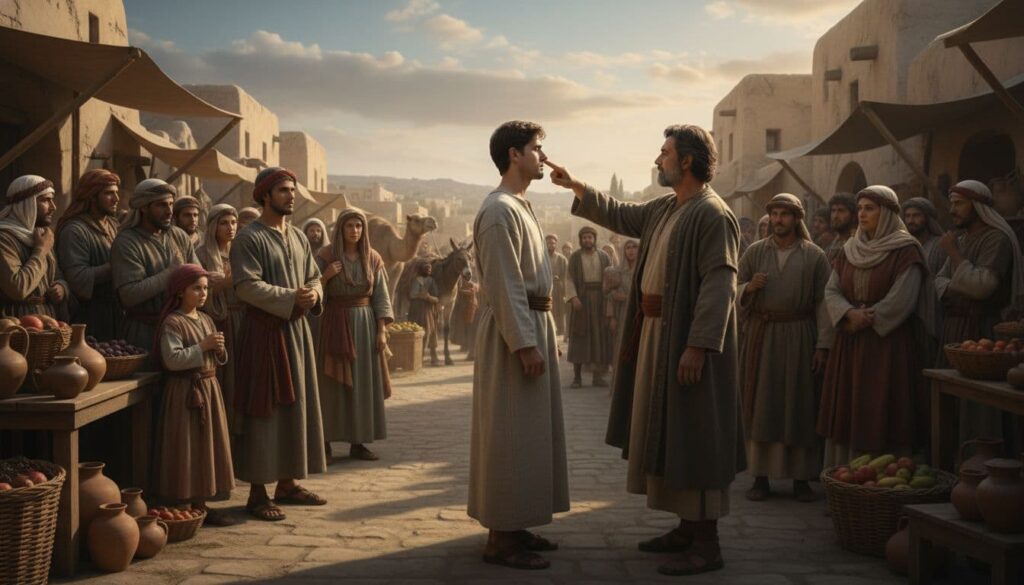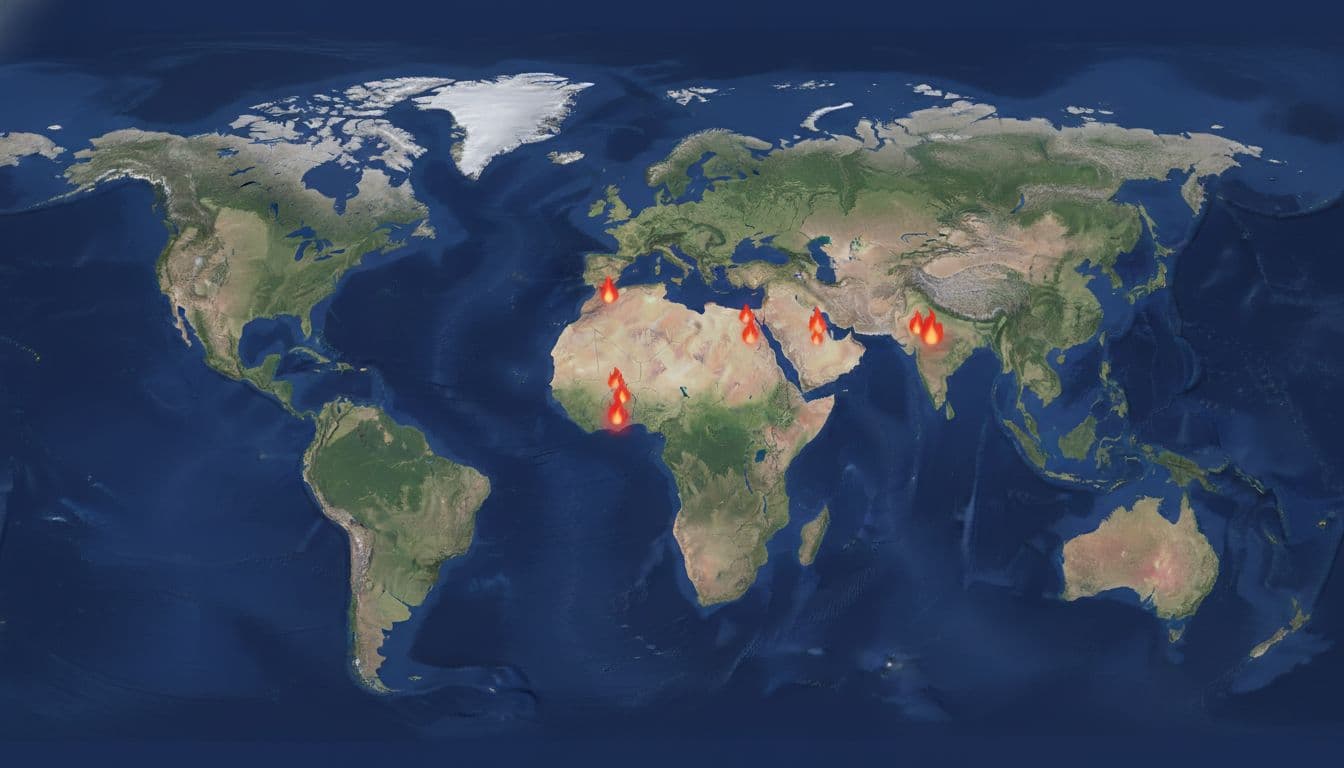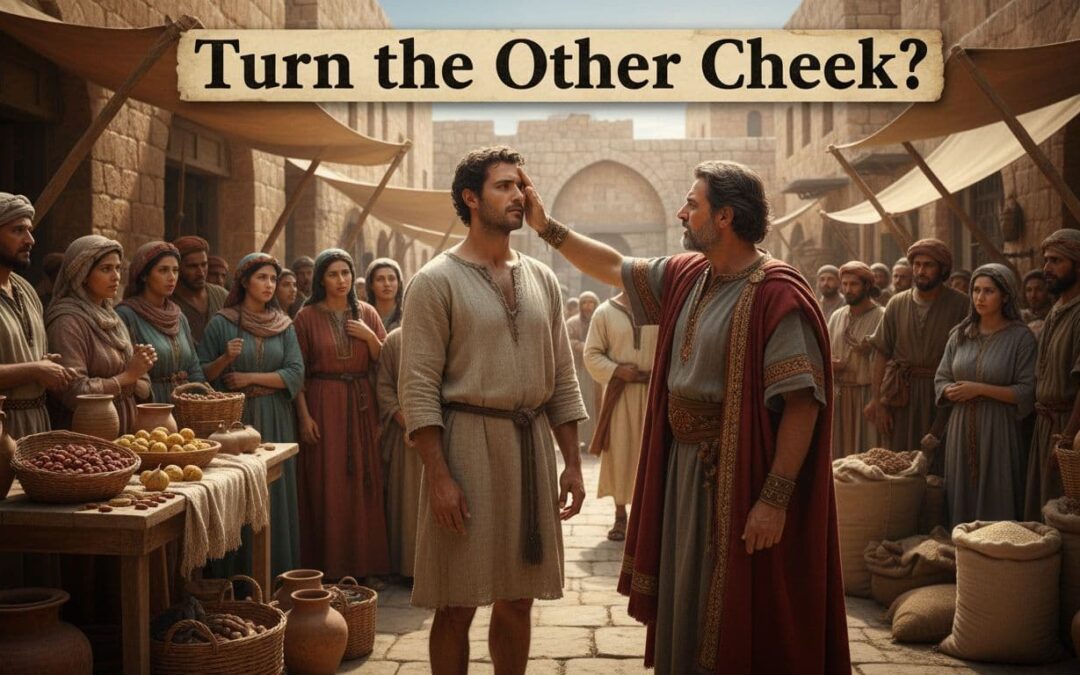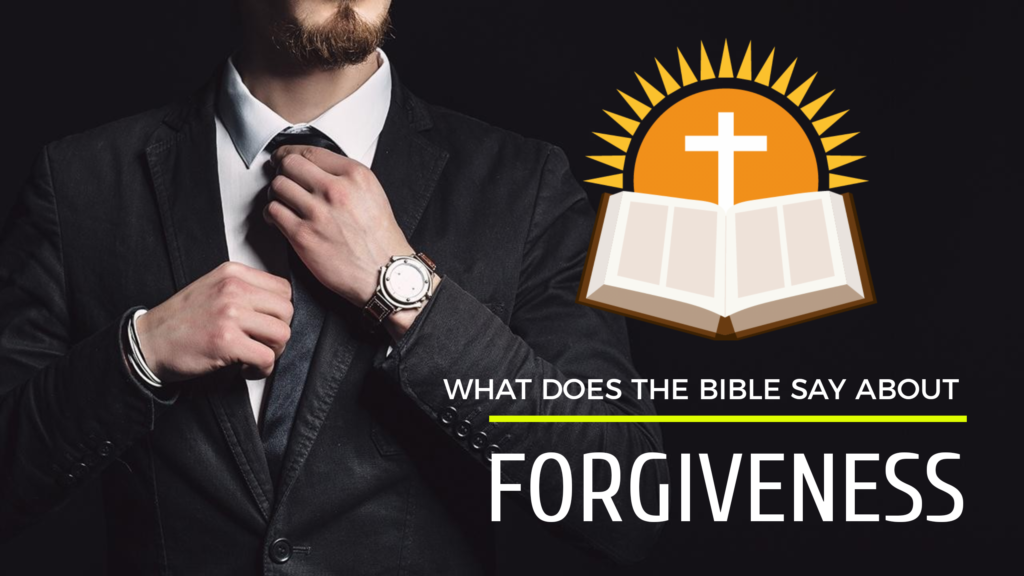Turn the Other Cheek: What Jesus Meant (and the Top 10 Persecution Hotspots)
A crowd snickers as a boss backhands a servant on the right cheek. It is a public insult, not a brawl. In that world, a right-cheek slap was a backhand, the act of a “superior” putting an “inferior” in place.
When Jesus said, turn the other cheek, he was not telling people to be passive victims. He was calling for bold, nonviolent resistance. If the servant turns the left cheek, the slapper must use an open hand or forehand. That move treats the other as an equal, and everyone watching would see it.
In the original language, Jesus says, “Do not resist by violent means” (antistēnai) in Matthew 5:39. He is correcting the “eye for eye” rule from Exodus 21, not to gut justice, but to stop cycles of payback. He also echoes Isaiah 50:6, where the Righteous Sufferer faces abuse with courage, truth, and dignity.
Over time, people made turn the other cheek mean “do nothing.” That twist has fueled a false view of Christian behavior in the face of real threats and actual violence. Jesus’ point is different. He rejects revenge, calls for protection of the vulnerable, and confronts evil with creative, public honesty.
So what does turn the other cheek mean today, especially for Christians under pressure in North Korea, Somalia, or the Sahel. We will unpack the honor and shame context, the right cheek detail, the Scriptures behind the saying, and the 10 worst places now. For a window into present-day violence against believers in West Africa, see our article Christian Persecution in the Sahel Region.
Original Meaning: What “Turn the Other Cheek” Meant in Jesus’s World

In Jesus’s world, a slap was not only a hit. It was a social message. To insult someone in public, a “superior” would backhand a “lesser” on the right cheek. That is the backdrop for the famous line. When we hear turn the other cheek, Jesus is teaching people how to break a script that keeps dignity buried under rank and fear.
The Greek text and the “right cheek” detail
“Do not resist the evildoer by violent means. If someone slaps you on the right cheek, turn to him the other also.” That is Matthew 5:39 in plain speech. Matthew notices the detail, the “right cheek,” and the Greek phrase is dexian siagona. In a right-handed world, a strike to the right cheek usually meant a backhanded slap. It was not a punch meant to injure, it was a put-down meant to shame.
Turning the left cheek changes the options. The striker must either use an open hand with the right, which treats the other more like an equal, or switch to the left hand, which was socially awkward. Either way, the script gets scrambled. The point is not to invite harm but to expose the insult and refuse the role of the lesser. Many historians and Bible teachers read the passage this way, even if they debate small details. The core insight stands: it resists humiliation without violence. For a clear overview, see the BibleProject’s explanation of what Jesus meant by “turn the other cheek” in Matthew 5:39.
Honor and shame in first‑century Judea
Honor ran the streets in first-century Judea. It was public, earned or lost in front of neighbors, and tied to family and status. A master, official, or wealthy man might backhand a servant, woman, child, or poor man to mark rank. That gesture said, “Know your place.” Crowds understood it. It was theater, and everyone knew their lines.
Now picture the victim turning the left cheek. That simple move refuses the role of the lesser. It is a bold claim: I am a person made in God’s image. You do not get to reduce me to property. This is not a counterpunch. It is moral initiative. The person stands tall, looks the other in the eye, and communicates dignity in front of witnesses. That is the power of nonviolent pressure. It calls the aggressor to see what they are doing, not with rage, but with truth. As one scholar puts it, the move invites the conscience to wake up. For a helpful cultural take, see this piece on Jesus’ peaceful plan to challenge injustice.
Not passive surrender, but creative nonretaliation
Jesus rejects revenge, and He also rejects passivity. He gives three quick pictures in a row. Each one exposes unfair power without using force.
- Coat and cloak: If someone sues you for your tunic, give your cloak too. That moment shames a creditor who would strip the poor. It puts the injustice in plain sight.
- Go the second mile: If a soldier forces you to carry his pack for one mile, carry it two. Roman law limited forced labor. Going farther puts the oppressor on the spot. It flips control.
- Cheek offer: When insulted with a backhand, offer the other cheek. The aggressor must decide, equal or bully. The audience sees it.
All three acts reset the scene. They avoid harm, and they reveal the wrong. They restore agency to the vulnerable. This is the heart of creative nonretaliation, and it is why turn the other cheek is not an order to accept abuse in silence. It is a strategy that names evil, guards dignity, and refuses to mirror hate.
Where this fits in the Sermon on the Mount

Matthew 5:38-42 is a unit. Jesus quotes the old standard, “Eye for eye,” which set limits on payback. Then He calls His followers to a new way. No revenge, no escalation, but also no surrender of dignity. He gives practical moves that stop the spiral and shine light in dark places. That is where turn the other cheek lives.
Watch the flow. Right after this section, Matthew 5:43-48 calls us to love enemies and pray for those who persecute us. The thread is clear. We honor God’s image in every person, even those who harm us. We refuse hate. We become peacemakers. That is not weakness. It is trained strength.
If you want a broad overview of how this phrase has been understood over time, the summary on Turning the other cheek gives a quick map across traditions. Jewish readers have also wrestled with related ideas about insult and endurance, as seen in this discussion, Is Turning the Other Cheek a Jewish Value?. These conversations help us see the shared concern for justice, mercy, and human worth.
Key takeaways you can hold onto:
- Jesus is stopping cycles of payback, not shrugging off harm.
- Dignity stands up straight, even when power tries to push it down.
- Public action matters, because witnesses learn what love looks like under pressure.
- Peacemaking is active, creative, and truthful.
So when you hear turn the other cheek, think strategy, not surrender. Think courage, not collapse. Think of a person made in God’s image, standing tall, telling the truth with their body, and inviting everyone watching to see the world as God does.
Common Misreadings: How “Turn the Other Cheek” Became Passive and Why That Is Wrong
We hear it all the time, and sometimes in the worst moments. “Just turn the other cheek.” For many, that phrase means be quiet, take the hit, and move on. But that is not what Jesus meant. The call to turn the other cheek is a call to brave, public truth-telling without revenge. It guards dignity, confronts harm, and refuses to copy the violence it faces.

From bold resistance to quietism
Some teaching took a bold act of nonviolence and reduced it to silence and surrender. You have probably heard versions like, “Good Christians never push back,” or, “If you are offended, be quiet and move on.” That rewrite turns turn the other cheek into a gag order. It can even become a shield for those who abuse power.
Here is the problem with that reading. It can excuse injustice. It can train a church or family to protect the strong and ignore the harmed. It also clashes with Jesus’s pattern. He told hard truth. He set wise boundaries. He exposed hypocrisy in public. When He taught turn the other cheek, He did not ask people to accept humiliation as a lifestyle. He taught them to stand in their God-given worth and break the script of domination without throwing a punch.
So what does that look like in real life? It looks like calm words, clear limits, and visible integrity when someone tries to belittle you. It looks like saying, “That is not OK,” and refusing to return insult for insult. It looks like creative actions that make the wrong obvious to everyone watching. For a helpful plain-language overview of how Christians often misread this phrase, see this article on what Christians get wrong about “turn the other cheek”.
Key clarifications to keep in view:
- Not silence: Turn the other cheek does not mean stop speaking. It means speak without spite.
- Not surrender: It does not hand your safety to a bully. It sets boundaries in the open.
- Not private only: It uses public witness. That is why the move works, it exposes the power play.
What it does not mean: tolerating abuse or ignoring danger
Let’s say it clearly. Jesus did not tell victims to stay in abuse. Turn the other cheek is not an order to remain in a home, workplace, or church where your safety is threatened. Wisdom moves you out of danger. Love tells the truth about harm.
If you or someone you love is in danger, make a safety plan. Call for help. Use lawful protection. In Scripture, God gives civil authority the task “to punish those who do wrong.” That is the point of Romans 13. Law is a gift that restrains violence and protects neighbors. Use it.
Here are practical steps that fit the heart of turn the other cheek:
- Call 911 if you are in immediate danger. Get to a safe location.
- Tell trusted people. Community matters, so reach out to friends, pastors, or elders who will act.
- Seek trained support. Counselors and advocates can guide safety plans and next steps.
- Document incidents. Keep records, save messages, and follow legal advice.
You are not sinning by seeking protection. You are honoring God’s image in you and in those who depend on you. Churches should be the first to say that, and the first to help. If you want a quick overview of common interpretations of Romans 13 that shape how Christians think about government and protection, here is a concise discussion on what Paul meant in Romans 13:1-7.
Did Jesus teach total pacifism or wise restraint?
Some hear turn the other cheek and assume total pacifism in every scenario. The New Testament gives a more textured picture.
- Jesus sometimes withdrew when a crowd turned violent. In John 8:59, He escaped stoning. That is not fear, it is wisdom. Timing matters.
- In the garden, Jesus told Peter, “Put your sword back,” in Matthew 26:52. Why? Because violence feeds violence. If the path is revenge, everyone loses.
- Paul used his legal rights. In Acts 22 to 25, he appealed to his Roman citizenship and to Caesar. He did not reject law; he used it to protect the mission and people.
Thread these together and you see the point. Turn the other cheek is not cowardice. It is faithful courage that refuses to return evil but still protects the vulnerable and advances the good. It is restraint with a spine. It says, “I will not harm you, and I also will not let you keep harming.” That balance fits the Sermon on the Mount and the rest of the New Testament.
Two simple tests help:
- Does my response seek revenge or seek the other’s good? If it is payback, it is not turn the other cheek.
- Does my response protect the vulnerable? If it leaves people exposed, it misses Jesus’s heart.
How churches can teach this well today
If churches teach turn the other cheek as passive silence, people get hurt. Teach it as brave, nonviolent resistance with clear boundaries, and people heal. Here are steps any church can take.
- Preach dignity and nonretaliation: Say it often. Every person bears God’s image. We reject revenge, mockery, and payback. We also refuse to enable abuse.
- Train people to de-escalate: Offer workshops on calm speech, active listening, and how to exit volatile spaces. Role-play common conflict moments. Practice matters.
- Set firm policies against abuse: Clear reporting paths, immediate safety priority, mandatory reporting when required by law, and third-party reviews for credibility.
- Partner with local services: Build relationships with counselors, shelters, legal aid, and law enforcement. That way, help is ready when someone needs it.
- Teach peacemaking skills: Confession, forgiveness, mediation, and restitution. Tie these to Matthew 5, Romans 12, and James 3. Make it normal to ask for help early.
One vital note: turn the other cheek applies to insults and power plays, not to life-threatening assaults. In a dangerous situation, immediate safety comes first. Get out. Call for help. Live to practice peacemaking tomorrow. After danger passes, the work of forgiveness and reconciliation can start, but never at the cost of truth or safety.
If you want a quick refresher that reinforces the nonretaliation heart of this teaching while correcting the passive reading, this short explainer on the phrase is helpful: “Turn the Other Cheek” meaning and why it is hard.
The takeaway is simple and strong. Turn the other cheek does not mean play dead. It means step into the light with courage, refuse revenge, and make space for justice and mercy to do their work.
The Deeper Meaning: Scriptures Behind “Turn the Other Cheek” and Why They Matter

Before Jesus said turn the other cheek, Israel already had a justice system that put a cap on payback. He did not erase justice. He redirected it from personal retaliation to radical love in public. That shift still challenges us. It reframes honor, exposes abuse, and calls us to act like children of the Father.
The background law: “eye for eye” in the Torah
In the Torah, “eye for eye” was not a license to hurt. It was a limit. The legal principle, called lex talionis, appears three times: Exodus 21:24, Leviticus 24:19-20, and Deuteronomy 19:21. Each text sets proportional justice, so courts match penalty to harm and stop revenge at the door. No feud spirals. No family war ignites. The point is measured justice, not payback.
Think courtroom, not street fight. These laws guided judges, witnesses, and restitution. They drew a bright line between fair penalty and personal vendetta. Over time, Jewish interpretation regularly applied financial compensation rather than literal bodily harm, which protected both dignity and order. For a concise overview of how this rule worked to restrain vengeance, see this summary of the principle in Eye for an eye and this short explainer on proportional justice from EBSCO’s Eye-for-an-Eye (Talion).
Now step into Jesus’s words. He honors the intent of lex talionis but moves the everyday disciple away from retaliation entirely. Personal payback is out. Creative mercy is in. When He says turn the other cheek, He is not weakening justice. He is stopping private revenge so public justice and divine mercy can do their work.
Key idea to keep: lex talionis limits harm; Jesus limits retaliation.
Why Jesus said it: break the cycle and restore dignity
Why say it this way? Because cycles of insult and revenge eat communities alive. Jesus calls His people to a new pattern that exposes wrong, honors God’s image, and refuses to copy the harm. Turn the other cheek is a concrete act that interrupts the script of humiliation. It is not a retreat. It is a move that puts truth on display.
This fits the flow of the Sermon on the Mount. Right after the cheek teaching, Jesus says, “Love your enemies” and “pray for those who persecute you” in Matthew 5:44. He blesses peacemakers earlier in 5:9. All of this hangs together. We replace grudge with prayer. We replace spite with truthful grace. If you want a smart, faithful overview of how this teaching exposes injustice without violence, the BibleProject gives a clear walk-through in What Jesus Meant By “Turn the Other Cheek”.
Here is the heart:
- Break the cycle: Refuse tit-for-tat. The spiral ends with you.
- Expose the wrong: Your calm stance makes the insult visible to all.
- Honor the image: You and your opponent bear God’s likeness, even in conflict.
- Keep hope alive: Your posture leaves the door open for repentance and repair.
So when you hear turn the other cheek, hear a call to moral clarity. You are not agreeing with the harm. You are refusing to carry it forward.
Practical steps to live this teaching
We need a simple path for everyday moments, from a snide comment at work to a heated family conflict. Try this five-step approach. It keeps you grounded, honest, and safe.
- Pause and breathe
Slow down for three deep breaths. Your body resets. Your words will be wiser. Turn the other cheek starts with self-control. - Name the harm without insults
Say what happened in plain words. “When you mocked me in front of the team, it crossed a line.” No sarcasm, no labels. Just truth. - Set a clear boundary
State a limit and a next step. “I will not accept public insults. If it happens again, I will end the meeting and follow up with HR.” Boundaries honor dignity for both sides. - Choose a creative nonviolent response that keeps dignity
Pick an action that exposes the wrong without returning it. Examples:- Offer a calm question that reveals the issue: “Would you say that to your peer?”
- Use respectful silence, then restate your point once.
- In a public slight, respond with steady eye contact and a measured, one-sentence reply.
All of these echo turn the other cheek by refusing revenge while making the insult obvious.
- Seek help from community or authorities when needed
In real harm or ongoing harassment, bring others in. Tell trusted friends, leaders, or supervisors. If safety is at risk, involve law enforcement. Seeking help is not a failure of faith. It is wisdom. For a balanced pastoral take on personal retaliation versus civil authority, see GotQuestions on what “turn the other cheek” means.
Two closing helps:
- Pray for the person who wronged you. Ask God to bless them with light, not to crush them. That shapes your heart while you hold the line. This is how turn the other cheek stays Christlike.
- Pursue reconciliation when it is safe. Repair requires truth, change, and sometimes restitution. Do not rush it, and do not fake it. But do not shut the door if God opens a path.
Quick reminder you can use in the moment:
- Stay calm, speak straight, set a boundary, choose a dignifying action, bring help if needed.
Turn the other cheek is not soft. It is strong and smart. It breaks the cycle, shows the truth, and protects the image of God in everyone involved.
What It Means for Christians Under Persecution Today

Followers of Jesus in hostile places live with daily risk. The call to turn the other cheek is not a call to be reckless or silent. It is a way to resist evil without copying it, to protect life, and to tell the truth in public. Here is what that looks like when danger is real and the stakes are high.
Wise courage in real danger
Jesus told His disciples, “When they persecute you in one town, flee to the next” (Matthew 10:23). He was not praising fear, He was teaching wisdom. In Acts, believers often moved for safety and mission, like the church scattered after Stephen’s death who carried the Gospel into new regions. Wise movement can be faithfulness.
What does wise courage look like today? It means you practice turn the other cheek with a clear head and a safety plan.
- Build small, trusted communities. House churches can be discreet, flexible, and strong. Rotate meeting places, keep attendance tight, and care for the quiet and the weary.
- Use secure communication. Protect names and locations. Limit digital footprints. Safety tools are not faithlessness, they are stewardship.
- Refuse revenge. Turning the other cheek can look like calm truth-telling after an insult, not an angry swing. It can look like recording abuses, filing reports, and protecting neighbors while you seek shelter.
- Tell the truth in public when possible. Document threats and incidents. Save messages, dates, and names. Calm records speak louder than rumors.
- Move when you must. Some seasons call for relocation, even across borders. Survival is not denial. It can be obedience.
This is courage with wisdom. You say no to hate without inviting a fight, and you protect people made in God’s image. For current risk snapshots that can guide planning, review the country profiles in the World Watch List 2025.
Use lawful protection and advocacy
Turn the other cheek does not reject the rule of law. It rejects personal revenge. Lawful protections can shield the vulnerable and expose injustice.
Practical steps that fit both faith and prudence:
- Document threats and incidents. Keep a secure log. Back up photos, videos, and witness statements.
- Contact trusted legal aid or vetted NGOs. They can advise on local law, asylum options, and safety planning. Organizations that track risk, like Global Christian Relief’s top countries overview, also connect to partners on the ground.
- Work with international advocates. Share verified reports with groups that engage diplomats and human rights forums. Quiet, persistent advocacy often opens doors.
- Activate the global church. Ask congregations to pray by name, give to relief funds, sponsor families, and share accurate updates. Use secure channels when needed.
- Choose nonviolent action. Public witness, legal appeals, and peaceful gatherings can expose unjust systems without copying their violence. That is turn the other cheek with backbone.
The point is simple. You do not fight fire with fire. You bring light, law, and neighbor-love to the flames.
Top 10 worst places now for Christian persecution

These brief notes reflect current assessments by major watchdogs tracking violent and systemic pressure. For details country by country, see the World Watch List.
- North Korea
Christians risk prison camps or execution if discovered. Faith must stay hidden. Family networks face collective punishment. - Somalia
Converts from Islam face murder, clan pressure, and militant threats. House meetings require extreme secrecy. - Libya
Lawlessness and militias target Christians, especially migrants. Abductions, extortion, and assault are common in conflict zones. - Eritrea
Unregistered churches are banned. Believers are jailed without trial in harsh conditions, sometimes for years. - Yemen
Civil war, Houthi control, and social pressure crush churches. Converts face severe penalties and isolation. - Nigeria
The deadliest violence against Christians comes from jihadist groups and militias, especially in the Middle Belt and northeast. - Pakistan
Harsh blasphemy laws and mob attacks threaten Christians. Accusations can spark riots and long legal ordeals. - Sudan
Renewed Islamist pressure brings church demolitions and arrests. Community hostility increases after political shifts. - Iran
House churches are raided. Leaders receive long sentences on security charges. Surveillance is constant. - Afghanistan
Taliban rule treats conversion as a capital crime. Believers hide or flee. Community betrayal remains a real risk.
These summaries are short, but the pain behind them is not. Turn the other cheek in places like these means brave endurance, truthful witness, and smart protection.
How readers can help
You are not powerless. Prayer and action, steady and humble, can save lives and strengthen faith.
- Pray by name for each country above. Ask God to guard families, free prisoners, and change officials who harm.
- Support trusted relief and legal groups. Give monthly so help stays steady in crisis.
- Write to officials about prisoners of conscience. Short, respectful letters matter more than you think.
- Welcome refugees. Offer housing, jobs, tutoring, and friendship. Churches can sponsor families together.
- Share accurate stories. Avoid rumor. Verify details. Keep people’s identities safe.
Invite your small group to adopt one nation to pray for this year. Share updates monthly. As you pray and act, you live Jesus’s nonviolent way, you turn the other cheek without turning away from the oppressed. For country updates that guide prayer, use the profiles in the World Watch List.
Conclusion
The big idea is simple and strong: in its original setting, turn the other cheek was creative, nonviolent resistance that restored dignity and broke the cycle of revenge. It publicly flipped a demeaning backhand into an equal-to-equal moment, which people in that culture understood on sight, and it matched the Scriptures Jesus cites and fulfills, from “eye for eye” limits in Exodus 21 to the Servant’s courage in Isaiah 50:6, then on to Matthew 5:38-44. Over time, many turned it into quietism, which distorts Christian witness and leaves people unprotected in the face of real threats and actual violence.
Choose wise courage, justice, and love in your daily conflicts, and stand with believers who suffer under pressure today. Practice calm truth, set boundaries, seek lawful help when needed, pray for enemies, and refuse revenge, and in all of this, turn the other cheek.





